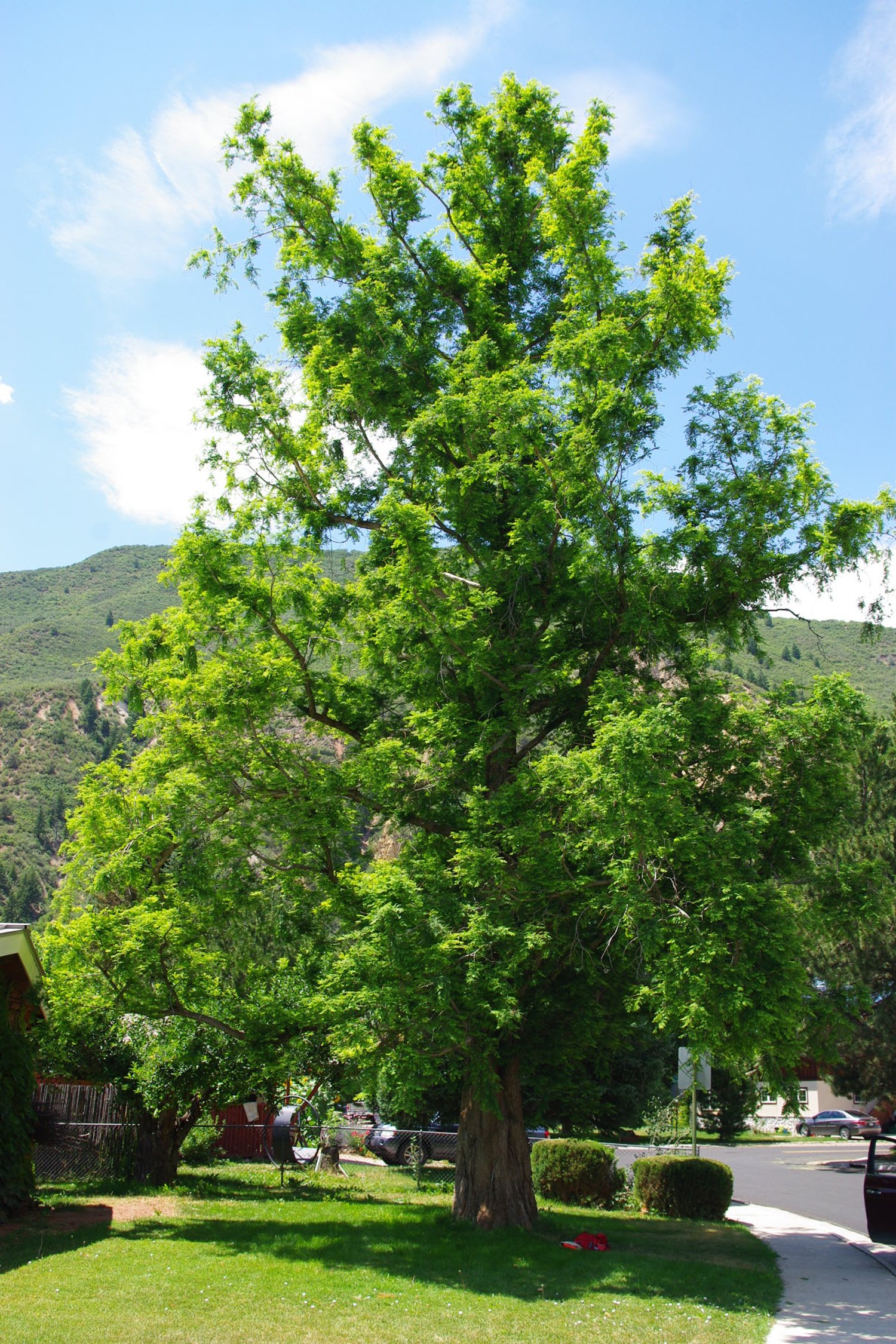dawn redwood (Metasequoia glyptostroboides)
First place champion dawn redwood in Grand Junction.
Species info:
Leaves: Soft, flat needles arranged oppositely along deciduous branchlets. Upper surface bright green; underside lighter. Needles turn copper-red in fall and drop along with the branchlets.
Leaflets: None (single needles arranged on deciduous stems).
Leaf Surface: Smooth, soft, and feathery to the touch; bright green in summer and coppery in fall. Opposite arrangement creates a distinctive “fernlike” texture.
Bark: Reddish-brown, fibrous, and vertically fissured. With age, bark exfoliates in long narrow strips, providing ornamental winter texture.
Flowers: Male and female reproductive structures occur on the same tree (monoecious). Flowers are small and inconspicuous; male pollen structures form in clusters and release pollen in spring.
Fruit: Rounded, green cones ¾–1 inch long, maturing to brown. Cones are composed of tight, spiral-arranged scales and persist into winter. Seed production is light but reliable.
Botanical: Metasequoia glyptostroboides
Family: Cupressaceae
Mature Height: Typically 50–65 feet in Colorado landscapes; can exceed 70 feet in ideal, moist conditions
Canopy Spread: 20–30 feet; narrow pyramidal when young, broadening with age
Foliage Type: Deciduous conifer
Flower: Inconspicuous
Fruit: Cone
Fall Color: Excellent
Tree Shape: Strongly pyramidal with a dominant central leader; fine-textured, lacy silhouette
Growth Rate: Fast (2–3 feet per year under favorable conditions)
Water Use: Moderate; prefers consistent moisture, especially in well-drained soils
Hardiness: Zones 4–8
Soil Preference: Prefers moist, acidic, well-drained soils, but performs surprisingly well in Colorado’s alkaline clays
Sun Exposure: Full sun
Wildlife Value: Provides shelter for birds and small mammals; seeds have limited wildlife use
Wood: Soft, light, and not especially durable; valued historically for growth rate rather than timber quality
Pests/Pathogens: No significant insect or disease issues documented on Colorado specimens
Planting Recommendations: Considered a tree with potential in Colorado, but anecdotal reports suggests that it is vulnerable to exposure and is sensitive to soil texture.
Information Sources:
Front Range Tree Recommendation List
Michael Dirr, Manual of Woody Landscape Plants (University of Georgia, 1990)
Virginia Tech -- College of Natural Resources Plant Fact Sheet, USDA NRCS


